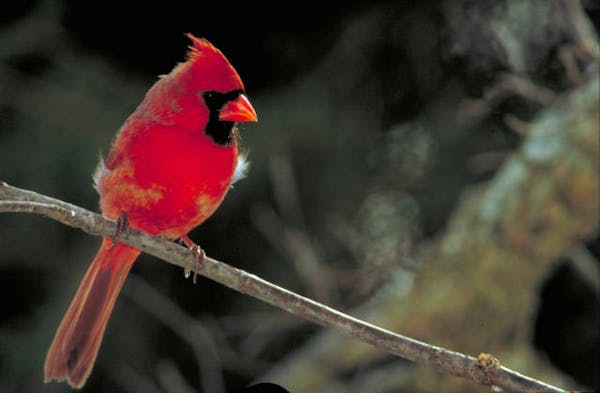The organizers of a new nonprofit loon foundation in Crosslake, Minn., have echoed a tremolo call for help — one that's being answered by a flock of influential supporters intent on building the first-ever National Loon Center.
The ecotourism project is a year in the making and its leaders are just starting to pursue the millions of dollars in public and private money needed to secure a shoreland site on Minnesota's highly visited Whitefish Chain of Lakes in Crow Wing County.
In November, Crosslake community volunteer Leah Heggerston, the daughter of U.S. Rep. Rick Nolan, D-Minn., knocked on doors in Washington, D.C., to promote the project behind the scenes and search for funding. The rough estimate for getting the loon center off the ground is $5 million, but more money would be needed to keep it going.
Already the idea has been embraced by the Crosslake office of the U.S. Army Corps of Engineers, a partner capable of making room for a new visitors center on 65 acres of federal land amid tall pines on the eastern banks of Cross Lake.
The location currently hosts a recreational campground operated by the Army Corps with access to 13 lakes, 13,660 acres of water and 119 miles of scenic shoreline. Heggerston said an early objective would be to repair environmental damage at the campground caused by users who have been pulling their boats ashore for years. Docks would be installed to end the practice.
Protecting natural shorelines for the benefit of loons would be one of the environmental thrusts of the center, Heggerston said. The center also would educate visitors about loon biology and inform lake lovers how they can safely recreate amid the magnificent birds.
"Everyone in our neck of the woods loves loons," Heggerston said. "People keep saying this is going to explode."
Minnesota lakes provide summer homes to roughly 12,000 common loons, more than any other state except Alaska. Still, Heggerston said, it was surprising that her group's research showed that no other state has formed a national loon center. One year ago, volunteers in Crosslake started their own 501(c)(3) foundation and trademarked "The National Loon Center," she said.
Virajita Singh of the University of Minnesota's Center for Sustainable Building Research has been helping to spearhead groundwork for the loon center. She has conducted public meetings (the final one is Tuesday) to shape ideas for the project in an assignment that will soon give way to feasibility and market studies. By June, organizers hope to have a business plan in place.
"It has great potential," said Bill Gartner, a University of Minnesota professor of applied economics.
Gartner, who helped in the formation of the International Owl Center in Houston, Minn., said the Army Corps would be a great partner and the Brainerd Lakes region could provide a crucial, built-in audience of seasonal visitors.
"It's going to be all about tourism," Gartner said.
The list of early supporters is impressive. Heggerston said her father is behind the project, as are other political leaders, including state Sen. Carrie Ruud, R-Breezy Point, chairwoman of the Environment and Natural Resources Policy and Legacy Finance Committee.
"It's a dream project for us," said Heggerston, who lives on the bay in Crosslake where the center would be built.
Wealthy cabin owners on the Whitefish Chain have shown substantial interest in helping to pay for the project, and the loon center foundation is reportedly liked by the Initiative Foundation of Little Falls, a key nonprofit in central Minnesota.
The state Department of Natural Resources has offered guidance to the project. Heggerston said DNR Commissioner Tom Landwehr asked to be his agency's No. 1 contact for the project. Also on board in different degrees are the National Park Service, U.S. Fish and Wildlife Service, the city of Crosslake, and Brainerd Lakes Area Chamber of Commerce, to name a few.
"The loon center idea checks a lot of boxes for our area," said Matt Kilian, the chamber president. "It could bring us an economic development boost, a new focus on natural resources, and a great tourism attraction all at the same time."
Spreading the message
Minnesota's loon population is stable, but nongame wildlife managers have been urging hunters and anglers to stop using lead ammo and lead fishing tackle to spare loons from the element's toxicity. Heggerston said the loon center could help spread that message and give visitors the opportunity to see loons up close.
Organizers are dreaming of an underwater viewing tunnel and aspiring to attract a freshwater research institute. They have acknowledged that traffic problems could be a barrier to the project, but some envision a citywide Loon Trolley to overcome the challenge.
If the National Loon Center takes wing, it would add to an ecotourism wildlife franchise in the state that already includes the International Owl Center, the National Eagle Center in Wabasha, both the International Wolf Center and the North American Bear Center in Ely, Hawk Ridge Bird Observatory in Duluth, and The Raptor Center, part of the University of Minnesota's College of Veterinary Medicine.
Tony Kennedy • 612-673-4213

Podcast: A Sam Darnold bounceback + a Tim Brewster comeback
Uncorked QBs smashing records all across Minnesota

Talented running back is the Star Tribune's All-Minnesota Player of the Year

All-Minnesota: Meet our picks for the state's best prep football players

